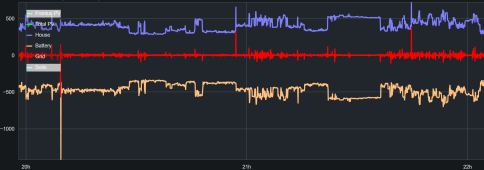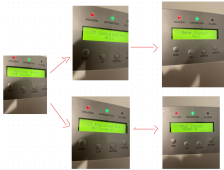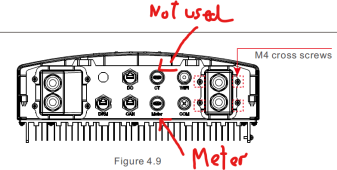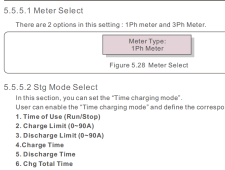OK, if the meter is on the grid side, the inverter should be set to "meter placement: grid".the biggest culprit to me sounds the meter placement.
in have set it to ‘Pv inverter’. I think it must be set to ‘grid’, where indeed the meter is located. indeed the acres meter is at the same location as the sma energy Meter and both are directly behind the main grid fuses .
my acrel-meter indicates positive values when we export into grid.
It is better to test this at night so the other SMA inverters will not interfere (or switch the SMA off).
If polarity of power is wrong you can change "CT direction" in solis options to reverse it.
The result should be: at night, running from battery, Solis inverter adjusts its output power to compensate for power used by the house, like this:

So this should fix your oscillation problem, I hope.
Now since you use other inverters with AC coupling, there's a bit more configuration. We don't have the same Solis model (I have S5) but perhaps yours will behave in a similar manner. Basically my Solis inverter doesn't like to see export power reported by the meter to be higher than the "backflow limit" setting. If this happens for more than a couple tens of seconds, it will shut down. Thsi happens if the other AC coupled inverters output more power than what the house is using, which results in net export. The solution is to increase the "backflow limit" setting, then it works fine.
I see a 3 phase Acrel meter on the picture, note I don't have code for this one, I sent you the code for single phase Acrel.










